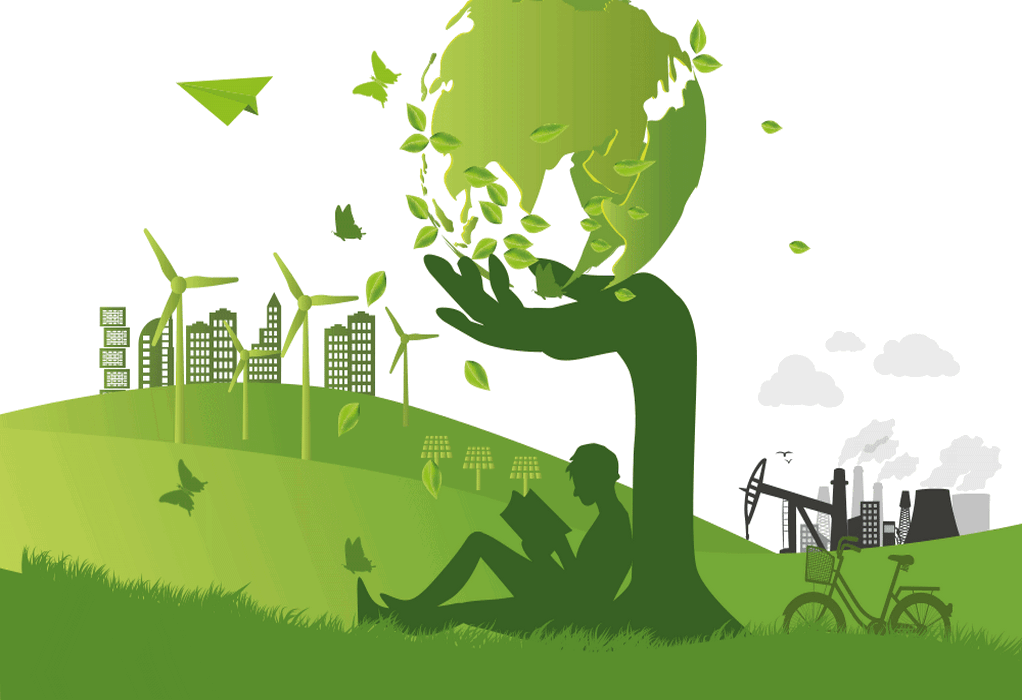Iceland certainly faces challenges to become carbon neutral by 2040. These include transitioning to a carbon-free transportation system, implementing more efficient waste-management practices, scaling up sustainable agricultural practices, and boosting local carbon removal efforts. Progress on these fronts will create a genuinely sustainable, climate-friendly, and circular economy in Iceland.
Iceland has put forward an ambitious climate action plan in order to meet the requirements of the Paris Agreement that will result in carbon neutrality by 2040.
A visitor to Iceland in 2040 will experience a truly sustainable way of life. First off, no fossil fuels will be part of your journey once you set foot on Icelandic soil. Iceland has relied exclusively on renewable energy for electricity production and district heating for decades, and the next energy-transition will be in the transportation sector. Continuous strides will build on Iceland’s expertise when meeting the challenge of going carbon neutral.
Icelandic industry runs on renewable energy in 2020; this will still be true in 2040.
All domestic transport in Iceland will run on locally produced alternative fuels.
The fishing sector will be powered by alternative fuels and meet its goal of a 100% yield.
Consumers will have full traceability of their meal, a carbon cost label, and carbon offset information directly from food suppliers, both in shops and restaurants.
By planting more trees and preserving wetlands, Iceland will provide more sanctuary for migrating and local bird species while reducing land-use carbon emissions and ensuring biodiversity.
Global companies will look to Iceland as the perfect test market to make use of local resources such as geothermal energy, clean water, and clean electricity. The Carbfix project will be significantly scaled up to decrease emissions from heavy industry worldwide.
Energy-dependent industries in Iceland have been using electricity generated from renewable resources in their production processes for decades.
Energy-dependent industries are embedded in many strategic value chains and make up more than half of EU industry’s consumption. These industries produce the goods and materials that enable dramatic emissions reductions in other sectors of the economy, including transport, construction, and power generation. These industries answer to the EU ETS (European Union Emissions Trading System) directive and are obligated to reduce their emissions substantially to be carbon-neutral. These are the goods produced by the green energy generated from falling water and geothermal heat into some of Iceland’s most valuable exports.
Additionally, Icelanders are spearheading R&D efforts within industry to reduce emissions further by constantly developing methods for long-term carbon capture and storage.
Perhaps no other sector will transform as much as transport. Fossil fuels will be phased out, especially after 2030, when the government will ban the import of such vehicles.
Local transport will have converted entirely to renewable or circular options with the electrification of most privately owned vehicles. Public transportation will be widely used, with the Bus Rapid Transport system Borgarlínan in place. There will also be a sweeping change from personal vehicle ownership to a ride-sharing structure. For larger vehicles and heavy machinery, a mix of locally produced alternative fuels such as hydrogen and methane will power industrial demands. All buses and coaches will run on locally generated clean energy. Domestic air travel will be electrified, making use of the clean energy infrastructure already installed in Iceland. Businesses will provide electric vehicles, bikes, and scooters for their employees to share as needed. The result will be a cleaner, safer, and more extensive transport network.
Future Icelandic fishing vessels will transition from fossil fuels to locally produced clean energy. Efficiency will increase, and carbon emissions will decrease, making Iceland’s premium fish the top choice for conscious consumers.
By implementing a circular economy model, the fishing sector will meet its goal of a 100% yield. There will be no such thing as fishing waste!
Icelandic companies already possess the technology to share with consumers exactly where a fish was caught, processed, logistics data, and even the boat captain.
Consumers are now more aware than ever of their products. By 2040, the entire supply chain will be green and transparent, showing consumers how the whole fish was used. The fishing fleet will connect to clean electricity in the harbor as it does in 2020. Land-based fish farming that is more productive, efficient, and ecologically sensitive will expand tremendously to meet the growing demands for protein. One can only imagine the spinoff attractions that Icelandic entrepreneurs will develop in this new reality.
With vast geothermal potential and know-how, Iceland is ready to scale-up its greenhouse production.
Locally produced tomatoes, bananas, strawberries, coffee beans, and flowers are just a few of the products already grown. Iceland has the potential to be self-sufficient in the industrial-scale production of organic, pesticide-free fruit and vegetables for its population and visitors. Icelandic lamb, a locally raised free-range staple, will be produced even more sustainably, with higher yields, and in harmony with nature.
Icelandic farmers are already planning for the certification of the entire agricultural sector as carbon neutral by 2040.
Alongside the price of goods, Icelandic food producers will include a carbon footprint labeling. For example, restaurants will list their menu items with details of the carbon emissions and how they offset those emissions to attain carbon neutrality. All Icelandic food products will include full traceability with verifiable sustainability data down to the fjord or farm.
Tags: Carbon Neutral, Fossil Fuels, Iceland, Paris Agreement

Recent Posts
India gets major push with first multi-purpose Green Hydrogen project
Carbon Clean starts CCS module construction
All American delivers hydrofoil-assisted tour vessel
Safe Bulkers continues fleet renewal with eco-friendly Kamsarmax
Solution developed to convert paper sludge, food and textile waste into bioethanol
V.Ships seals shipmanagement deal for X-Press Feeders
G7 countries task IRENA to monitor Group’s renewable energy progress
Kongsberg Maritime hybrid technology to optimise energy use and cut emissions